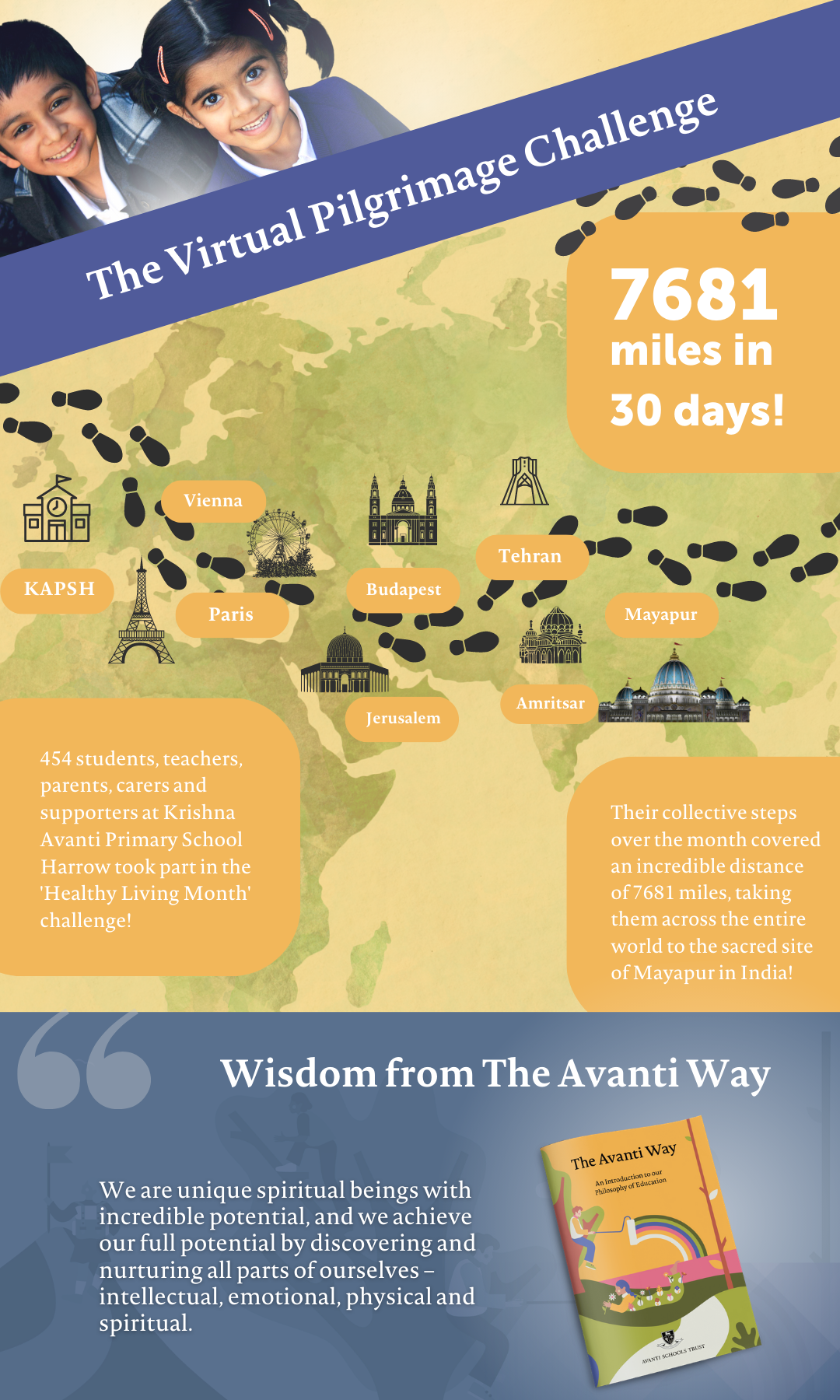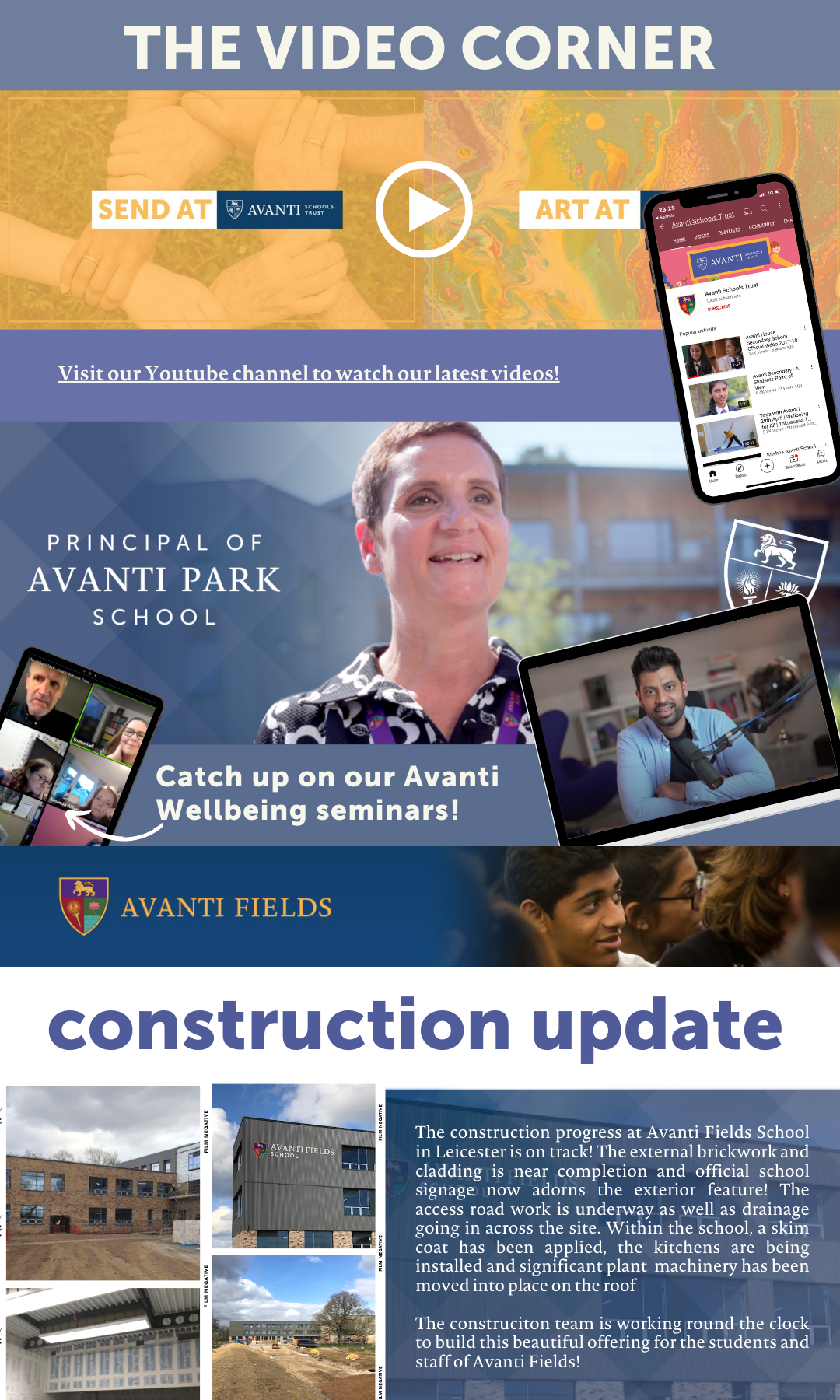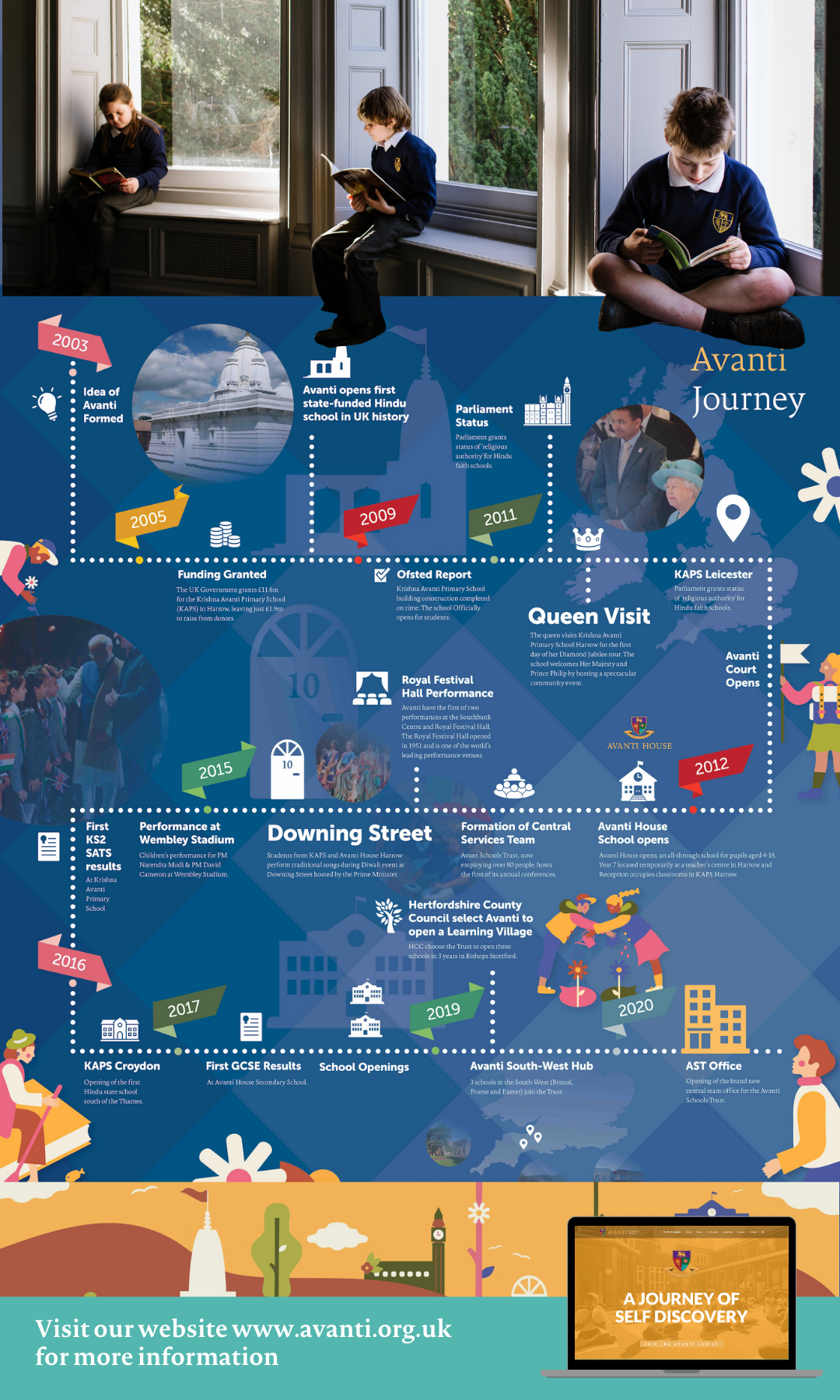
May 2021 Edition

By Mike Ion
Share
Teaching students so they will never forget
“What if understanding memory was the key to unlocking learning?”
Long-term memory is a powerhouse of human cognition, helping us to solve problems, make sense of new information and look things up. But storing things securely in long-term memory can be really hard, particularly for students who have to remember lots of new information in lots of different subjects.
What is known as ‘spaced-repetition’ is a solution to this problem. It is one of the best-evidenced findings in cognitive psychology, and makes remembering things much easier and quicker, but despite this it is not often used.
The video presentation below provides a quick overview of ‘spaced-repetition’ research and some practical advice about how you can integrate a ‘spaced-repetition’ flashcard system into your teaching and planning.
Teaching That Sticks
Why do we remember somethings better than others?
The article below was written by Chip and Dan Heath, the authors of popular books such as Made to Stick, Switch and The Power of Moments. In this article they explore why ideas become sticky and how that might translate into the classroom.
Key Takeaways
- Sticky ideas are SIMPLE and focus on the most important information. They contain “What matters most” and consciously exclude anything else.
- UNEXPECTED ideas or experiences raise levels of curiosity and motivate students to want to know more.
- Ideas that are made CONCRETE through the explanation of practical application or physical involvement by students seem to be more sticky.
- Making an idea or a piece of information CREDIBLE by using facts or getting students to see or experience it is key.
- Connecting with EMOTION during the learning process can help by attaching information to feelings which are often easier to recall than isolated knowledge.
- Knowledge or ideas woven into STORY are particularly powerful as they trigger mental simulation and enable students to put themselves into the situation or idea.
Dear Avanti community member,
We call upon you today in a time of great urgency. As you will be aware, due to the COVID 19 crisis, India is now undergoing a severe shortage in the delivery of Oxygen to patients.
Part of our vision for ‘Character Formation’ at Avati is one where virtues are taught by example, fostering a powerful sense of individual and collective purpose. The capacity to internalise and put into practice what we have learned is the true test of learning.
This is why we have joined together with The Lotus Trust during this crucial time of need to provide beds and oxygen to the most vulnerable.
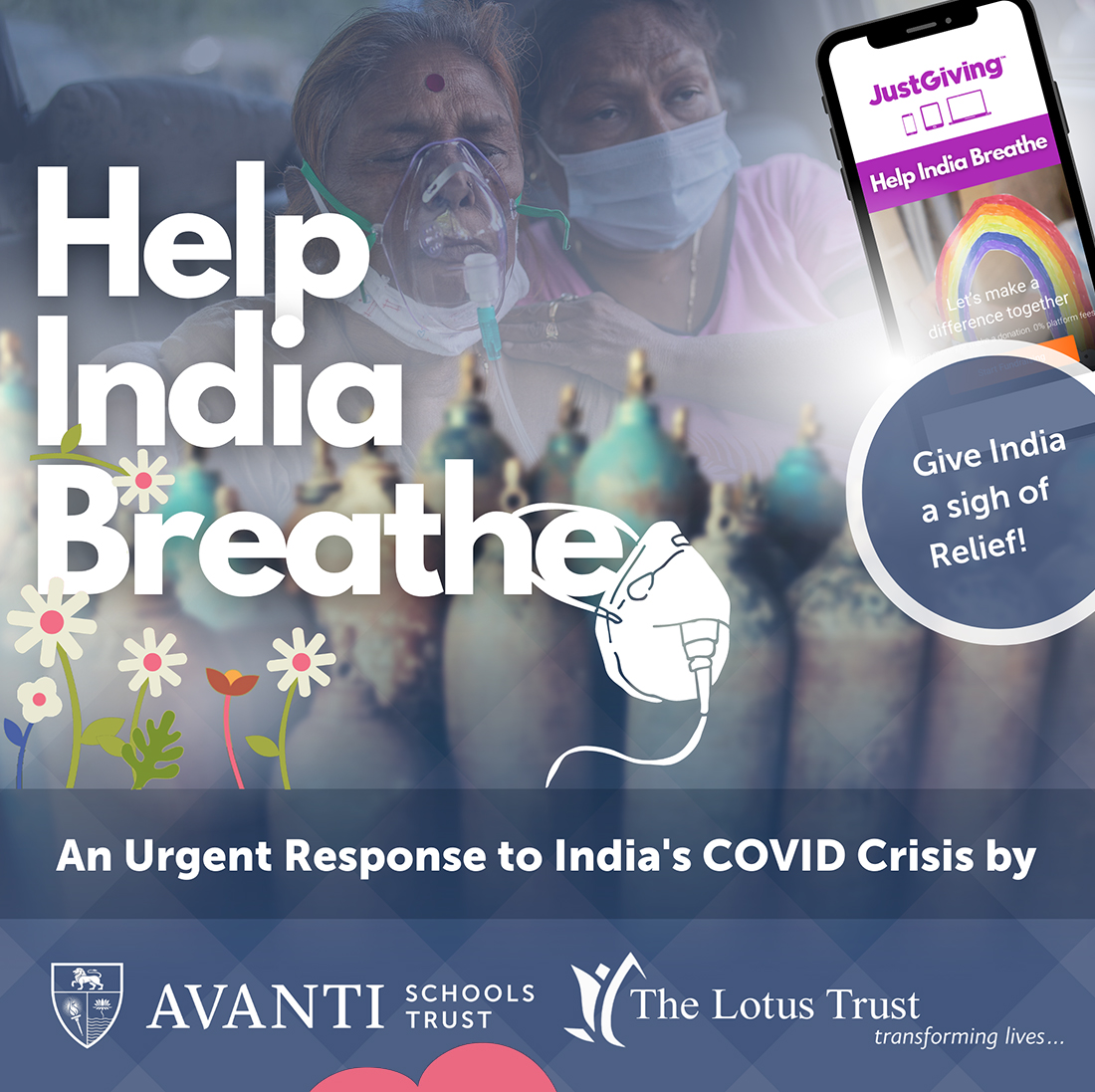
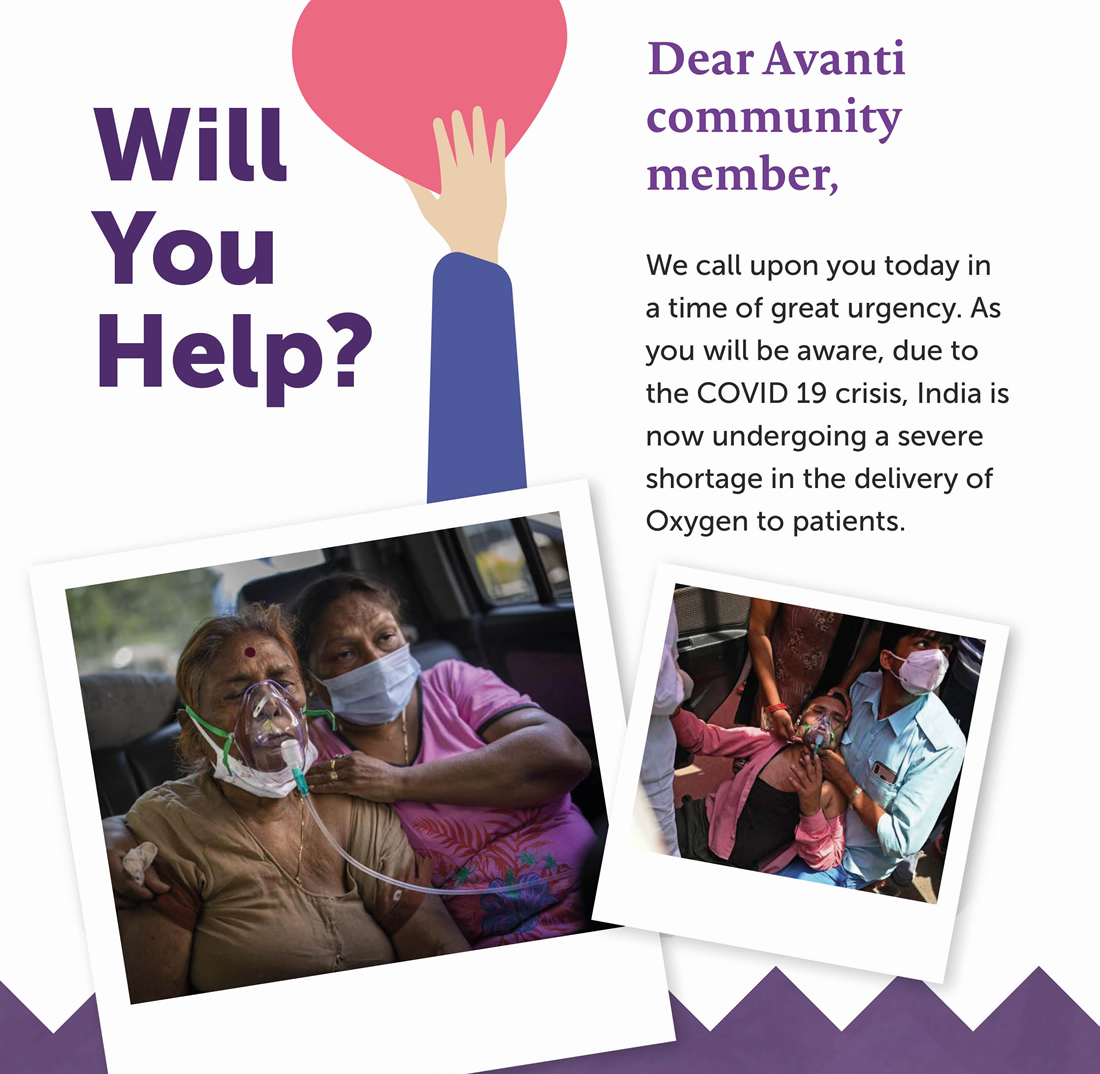
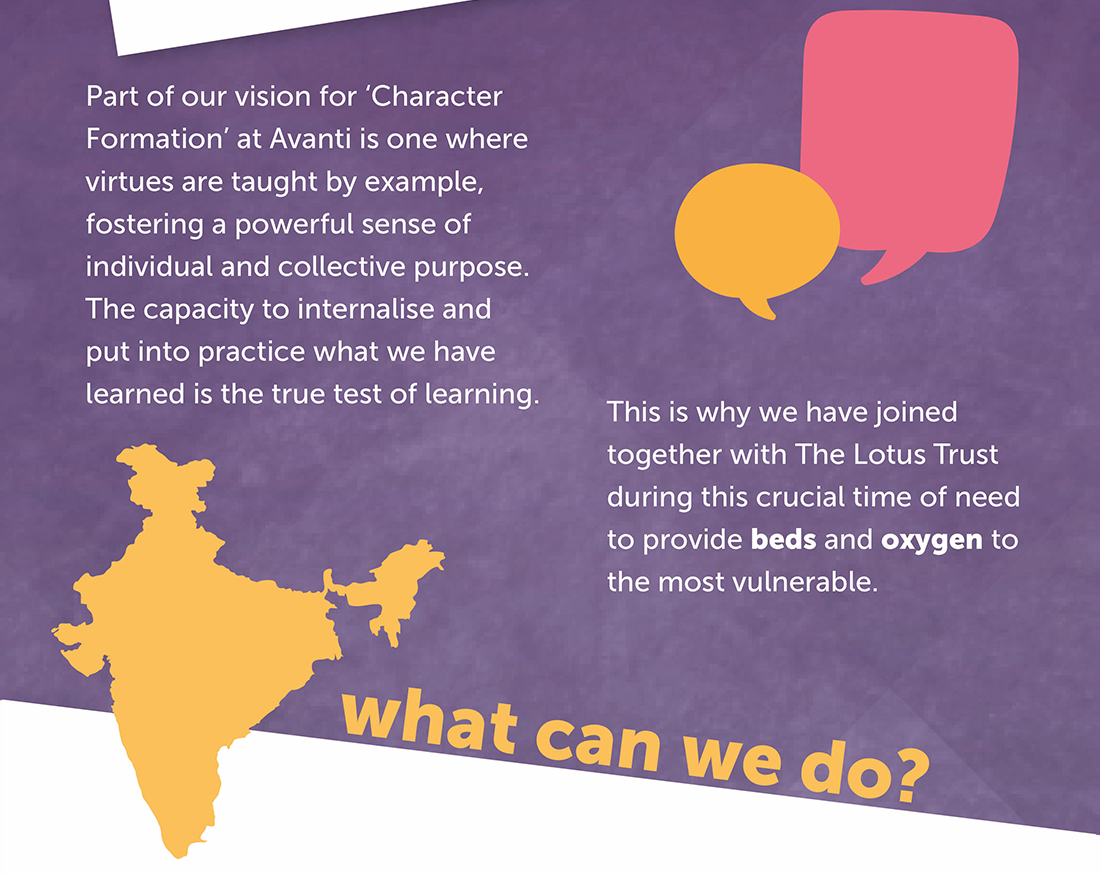




March 2021 Edition

By Sarah Kurth
Share
Give me a (Brain) Break!
I am in little doubt that many of us have heard of brain breaks in one form or another but perhaps less about the scientific processes and positive impact that these simple and short activities can have on cognitive functions, focus, morale, and classroom relationships.
A brain break activity is specifically designed to allow students to take a pause, move away physically and mentally from their current task, and complete a different style of activity for a short period of time. When skilfully implemented brain break activities cause a deliberate cognitive shift to take place, yielding a wealth of positive learning benefits. Brain breaks can be interleaved into the face-to-face learning environment and arguably perhaps with a greater impact, into remote online learning provision. Successful and popular brain break activities often include movement, humour and opportunities to interact and strengthen relationships with teachers and classroom peers. (Please below for practical examples)
Furthermore, scientific research over the last two decades has highlighted the significant positive benefits of brain break activities on memory retention, motivation, and long-term retention of new learning. The neuroscience behind these short activities proves that a planned change and style of task allows students to pause, rest, and revitalise key pathways in the brain. Moreover, specific types of brain breaks have proven to boost students’ mood and resilience. This change in state and mood is a pleasant side effect of the process of replenishing worked and stressed neurotransmitters in the brain and facilitated by a ‘brain break’. Neurotransmitters are essential to maintain calm, focus and memory retention.
As an MFL teacher, I often draw upon the work of Gian Franco Conti for the most effective ways to reduce cognitive mental load and achieve optimum memory retention for all students in MFL lessons. Conti often talks about ‘cognitive fatigue’ and how research points to the impact on learning during key times in the school day and how specifically later in the school day can affect students’ levels of engagement, retention and focus due to mental fatigue. Sierversten et. al. 2016, for instance found that for every hour later in the day test scores reduced by 0.9%. However, they also found that short regular breaks in learning improves average test scores.
At Avanti Fields School, we recognised the common side effects of working and learning in front of a screen for sustained periods and the consequent negative impact on performance both academically and emotionally, particularly at this time. As a school, we devised a range of strategies to alleviate the side effects of fatigue and cognitive overload in our whole school community. Our overall goal was to reduce the negative side effects whilst increasing levels of engagement, morale and motivation. We achieved this goal by firstly introducing a wellbeing screen free, activity afternoon where students completed tasks independently away from their screens and secondly by introducing a pilot group of students to trial brain breaks during subject Google Meets and independently as required. (The institute of Positive Education and their PEEC curriculum designed all brain break activities implemented). As you can see from the data below and the student testimonials, the results of our strategy and pilot scheme were extremely positive across all year groups.
References
Institute of Positive Education
Gian Franco Conti – The language teacher toolkit
Judy Willis – Edutopia.org
Student testimonials
‘In regard to the Brain Break activities, I would undoubtedly recommend these as a great way to take a short but effective break, which gives your mind a chance to recuperate during this time of online learning ‘I think it’s a positive way to stay healthy both mentally and physically’. Tanisha (Year 9)
‘The Brain Breaks helped a lot yesterday because I tried a few and they helped me concentrate a bit better and do my homework quicker than I usually do so thank you so much Mrs’. Vibhish (Year 7)
‘I personally enjoyed the activities as it calmed my brain from all the work I am doing. The brain activities did make a positive difference, and this was helpful as it can improve our blood flow to the brain and lowering levels of stress hormones’. Jiya (Year 8)
Pilot survey results

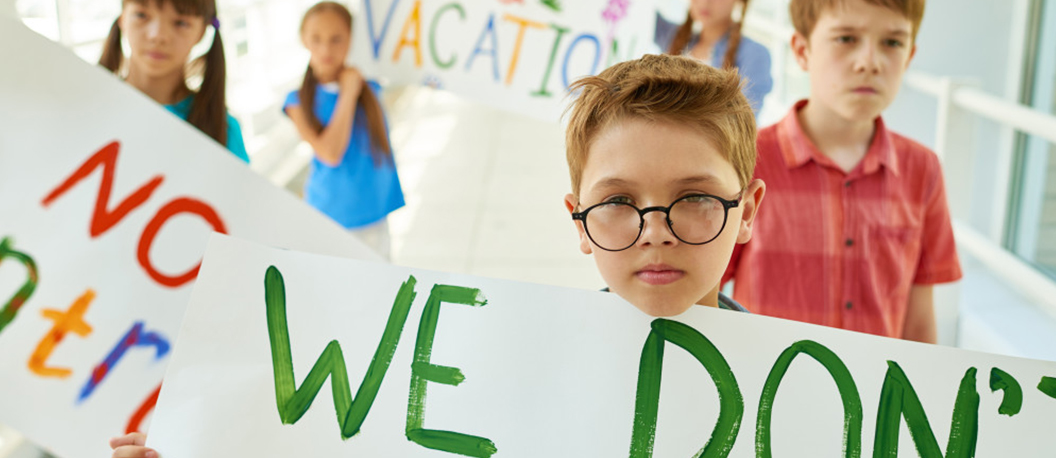
March 2021 Edition

By Devika Bridgmohun
Share
How do we promote the rights of the child in schools?
The Rights Respecting Schools Award recognises a school’s achievement in placing the United Nations Convention on the Rights of the Child (CRC) at the heart of a school’s planning, policies, practice, ethos, going beyond the school environment, making positive changes in the community and the rest of the world. The UNCRC is a list of rights that all children around the world are entitled to and need, to make sure they are healthy, happy and safe.
The award compliments the Avanti Way Philosophy for education: Avanti exists to help each person become a well-rounded human being through intellectual, moral and spiritual growth and so make the world a better place. As our journey of becoming a rights respecting school continues, children’s confidence and self-esteem are strengthened. At Krishna Avanti Primary in Leicester, we pride ourselves on our students having a voice. We value their views on every aspect of school life and nurture a culture where all children feel listened to, valued, respected and empowered. Some of the leadership groups include the Rights Respecting Warriors, Digital Leaders, School Council and the Eco-Warriors. Not only have the staff received professional coaching sessions, but so have the students in certain year groups. Children feel a sense of security and enablement, as the right-respecting language and behaviour becomes predominant throughout the school. Pupil voice continues to grow alongside a greater engagement with learning, showing dignity and non-discrimination, embracing diversity and overcoming prejudices. The article of the week is linked very closely to the different festivals and integrated within topics. For example, British Science Week and World Book Day link to article 29; International Mother Language Day relates to article 30 and Safer Internet Day links to article 16 and 17. Children have become more active and have taken ownership of their learning and have very quickly become change makers, ambassadors for rights wherever they go, taking part in campaigns and activities to bring about change. During Justice Week, children learnt about the following:
* Foundation Stage – what is fair and unfair?
* KS1 – what would a day without any rules look like?
* KS2 – wrote letters to our local MPs about what new laws they would like to be enforced.
Children’s rights are reinforced throughout the school. Displays and lessons are linked to articles, while the rights respecting heroes for the week are congratulated and praised by their peers and duty bearers. The half-termly rights respecting competitions immerse children in the rights, making it fun and interactive. Raising money for charities such as Children in Need, Comic Relief and ShoeShare Project (Campaign in partnership with the Rights Respecting School Award and Clark Shoes) raise awareness and illustrate the positive impact that team work can have. By understanding Global Goals for Sustainable Development, children begin to understand the deeper meaning of the schools values: respect, gratitude, empathy, integrity, courage and self-discipline and begin to think about how they can make a difference in the world they live in.
As we venture through the process of achieving the silver and gold award, we continue to create an environment where everyone has a thorough understanding of the rights; the positive impact of these on school life are clear and young people see themselves as global citizens and advocate for social justice.

March 2021 Edition

By Matthew Dominé
Share
The ‘Avanti Way’ to more inclusive behaviour management
There are key elements of the Avanti Way that outline how we should manage behaviour in a more compassionate and inclusive way where sanctions are not the only answer to developing the character of our pupils.
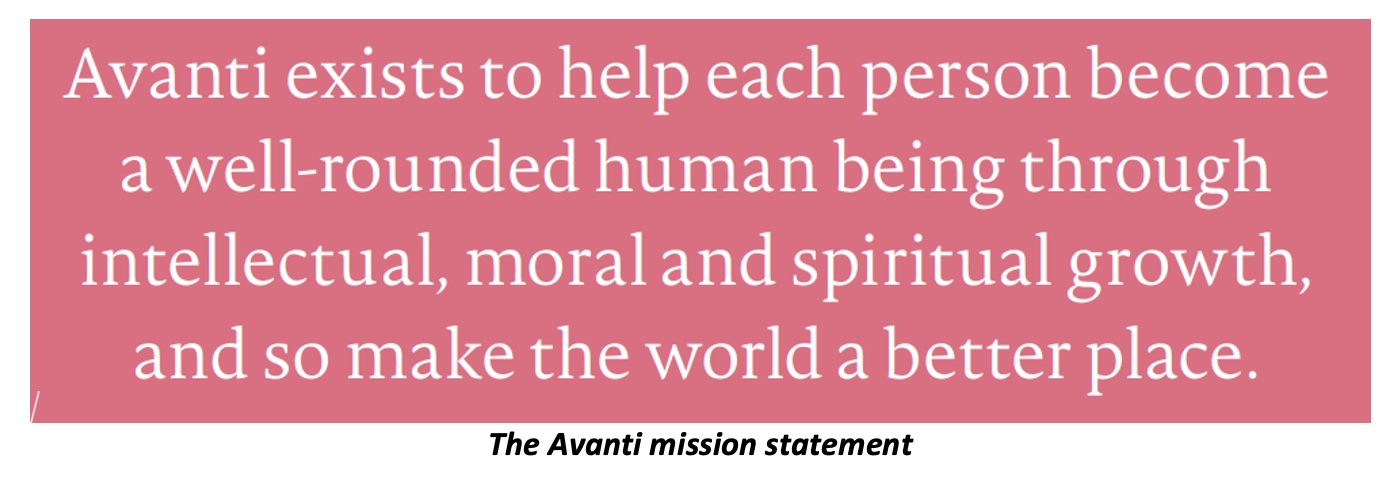
At Avanti House Secondary School we are regularly developing our behaviour policy and practices to ensure that we are an inclusive school where our pupils are not simply punished for their mistakes, but instead are given the opportunities to learn and grow through a range of supportive practices. As per the Avanti Way, these practices are based on empathetic dialogue and developing collaborative relationships built on mutual respect. This article will explore two of the alternative approaches that we have introduced, and the impact that we have seen.

Restorative Language & Questioning
The Restorative Justice Council explain that “Restorative practice can become an explicit set of principles and practices that inform every communication in a school. The aim of restorative practice is to create a context where pupils engage actively in learning about their social behaviours, rather than acting as passive recipients of rules and sanctions.” Restorative practice focuses on repairing relationships that have broken down to restore the safe and secure learning environment that we all strive for.
Restorative practice can, and should be used, for all conversations with children about their behaviour. At Avanti House Secondary School we started using this approach in January 2019 in a more formal way to resolve conflicts between pupils, but we are now moving towards a whole school approach where the language and questioning outlined below is being used in a range of situations. Our next step is to embed this into the daily practice of all members of staff across the school.

To find out more about restorative practice I would encourage you to visit the following articles and websites:
- https://restorativejustice.org.uk/blog/restorative-practice-schools-developing-responsibility-over-conformity
- https://pastoralcarematters.blog/2021/02/27/restorative-practice-there-really-is-a-better-way/
- https://www.restorativeresources.org/uploads/5/6/1/4/56143033/challenge_of_culture_change.pdf
- https://www.tandfonline.com/doi/abs/10.1080/02667360903151767
Reflective & Supportive Detentions
In the Summer term of 2018, we identified that there were a number of pupils being issued detentions repeatedly for the same reason and this was escalating to internal and fixed term exclusions (FTE). The traditional way of punishing negative behaviours through detentions was not having a positive impact on behaviour so we decided to develop a new way focussed on self-reflection, dialogue and support.
We moved to separate detentions for different behaviours to enable more targeted intervention and support.
- 20-minute morning detentions focus on repeated lateness, lack of homework, incorrect uniform & lack of equipment. This provides an opportunity for pupils to reflect on routines at home (morning and evening) and for teachers to identify any additional support needed through dialogue with each pupil.
- 60-minute afternoon detentions focus on disruptive and disrespectful behaviours. Pupils are given the opportunity to reflect on the impact of their behaviour on themselves and others. Through written tasks, and dialogue with a teacher, they develop strategies to prevent repeating the behaviour and we can also identify any additional support that may be needed.
So what has the impact been?
The most effective way of assessing the impact of behaviour management strategies is to compare the number of incidents of exclusion (internal and external) along with the number of pupils that are receiving repeated exclusions. Children make mistakes but it is our job to ensure that they learn and do not repeat them.
Fixed Term Exclusion (External)

As you can see below, we have had a significant decrease in the total days of exclusion over the past 3 academic years.

It is extremely positive to see that the number of pupils that have received more than 1 fixed term exclusion has significantly decreased since we have introduced our more inclusive and restorative practices. This indicates that pupils are receiving the support they need to prevent behaviours from repeating.
Internal Exclusions

The data demonstrates that for the past 3 academic years there has been a significant reduction in the number of internal exclusions. The result of our inclusive and restorative practices have also resulted in a large decrease in the number of pupils receiving more than 1 internal exclusion.
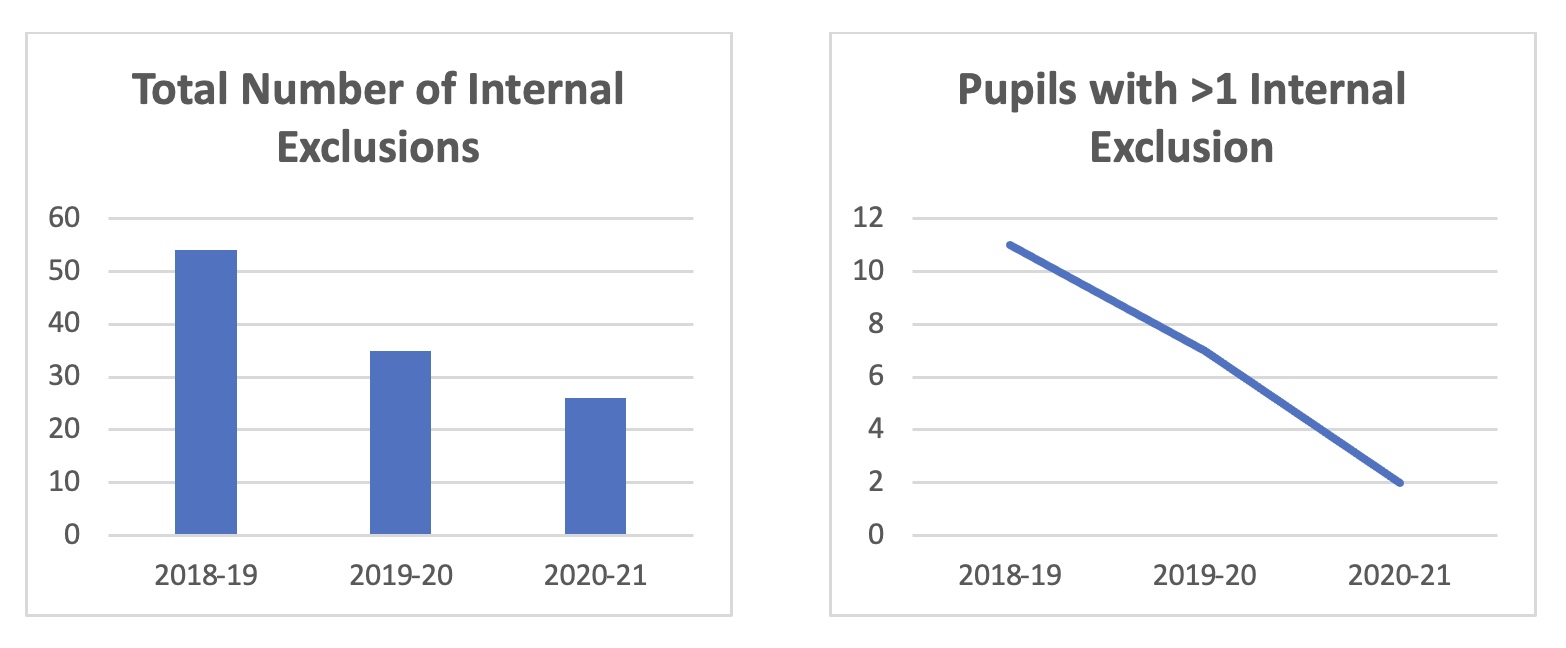
Summary
The introduction of both restorative practices, and moving detentions to have a reflective and supportive focus, has resulted in a significant reduction in the number of pupils repeating negative behaviours. This has led to a decrease in both internal and external exclusions, as well as the number of pupils receiving multiple internal and external exclusions.
As a Trust, and a school, we have embraced the messages within the Avanti Way and the proof is in the pudding.

March 2021 Edition

By Raaj Raniga
Share
Students don’t care what you know until they know you care
In 2017, I began my PGCE, having decided to redirect my career path from Banking and Finance and the promise of a much more luxurious lifestyle, to live a more meaningful life in Education. After completing my NQT year at Avanti House Secondary school, I decided to pursue a part-time Masters in Researching Practice, where I examined the role of relationships on motivation, using my personal experiences as a point of focus. In December 2020, I received the news that I had successfully completed the Masters and although I was really proud to have accomplished this, it was the personal transformation that I have experienced in my interactions with students that has proved to be the most fulfilling result of this experience.
One of the biggest challenges for teachers in the 21st century is to continue to find ways to motivate their students to be the best learners they can be. In a world where fast-moving social media and technology metaphorically and in real terms ‘speed up’ life experiences, how does a teacher, who may not have access to the fast-paced social experiences of students, keep apace? As a class teacher, I have noticed how my planning and pedagogy has to adapt to meet the needs of students, who, outside my classes are motivated by matters which I cannot include in my lessons. Has this always been the case? If so, how do teachers motivate their students?
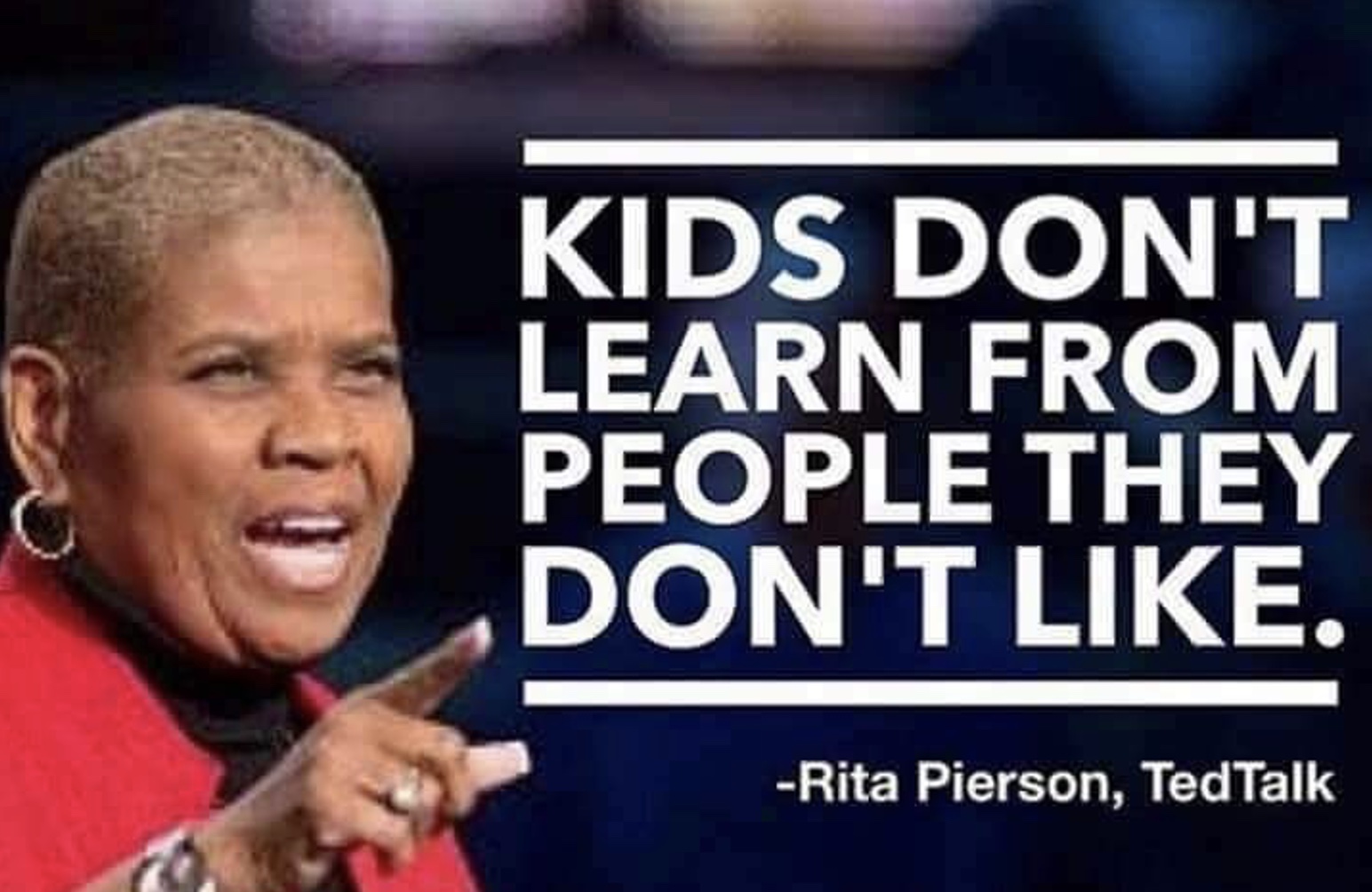
My review of the literature found that student-teacher relationships had such a significant impact on student motivation. In her famous TED talk, former teacher Rita Pierson says “you know kids don’t learn from people they don’t like” and my research has enabled me to gain a better understanding of what actions lead students to ‘like’ their teacher, but more importantly, motivate them. In an attempt to summarise over sixty pages of research into something that the ever-busy teacher can read in just two minutes to transform their teaching experience, I have four aphorisms to motivate anyone:
CARE
Tell them you care, show them you care, and genuinely care about them as people (not their grades). Because people don’t care what you know until they know you care.

WHY
Start with why. Why are they here? Why should they work hard? Why did they do that? This is incredibly powerful as it allows you to put the onus on them. Students often have the impression that they are in school for us. We need to flip the script.
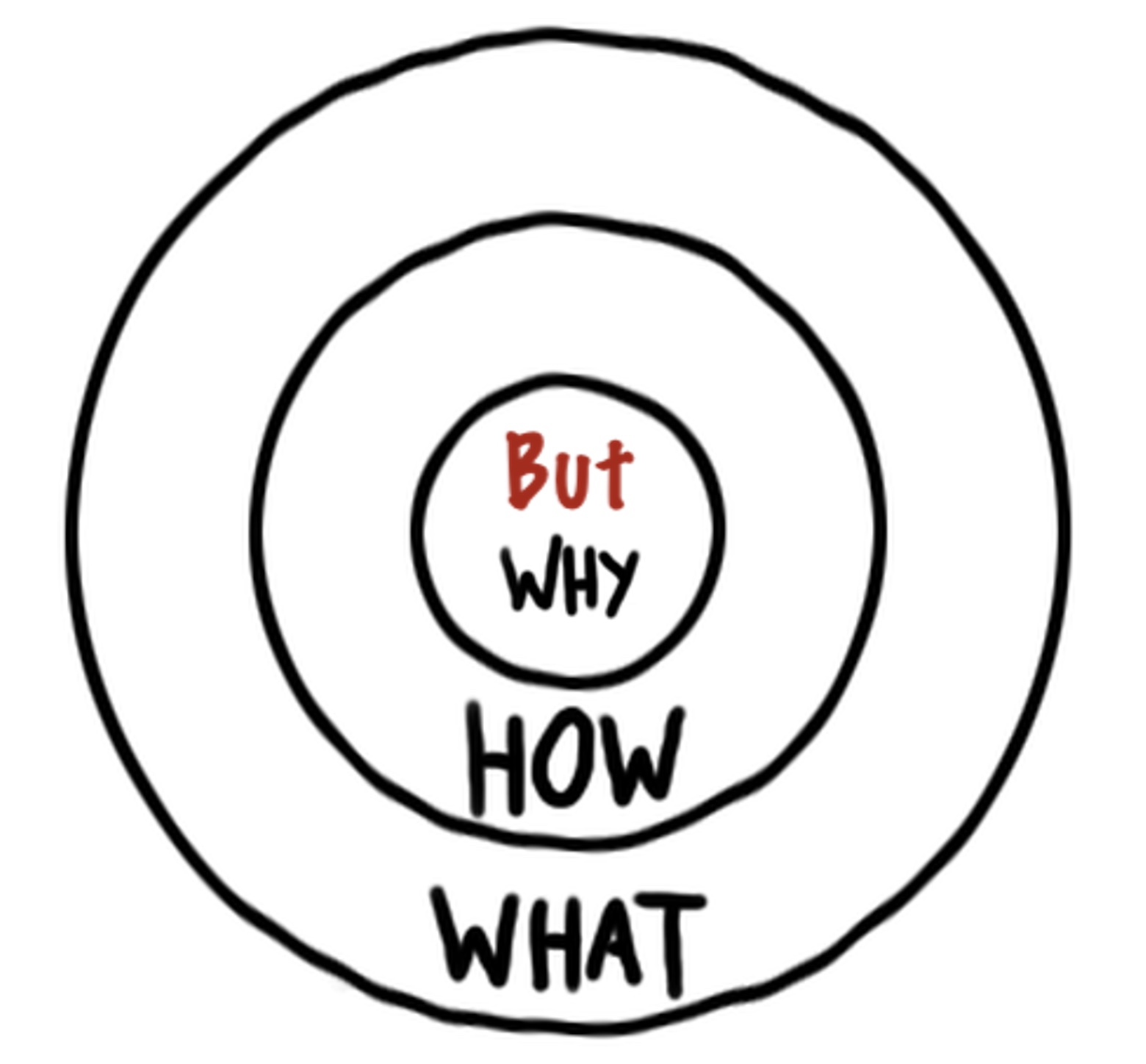
PATIENCE
Understand that when students are apathetic towards learning, acting out or, not concentrating, there is an underlying reason behind it. Don’t lash out, but rather investigate. Find out why they are acting out, be empathetic and remind them that you are trying to help them.
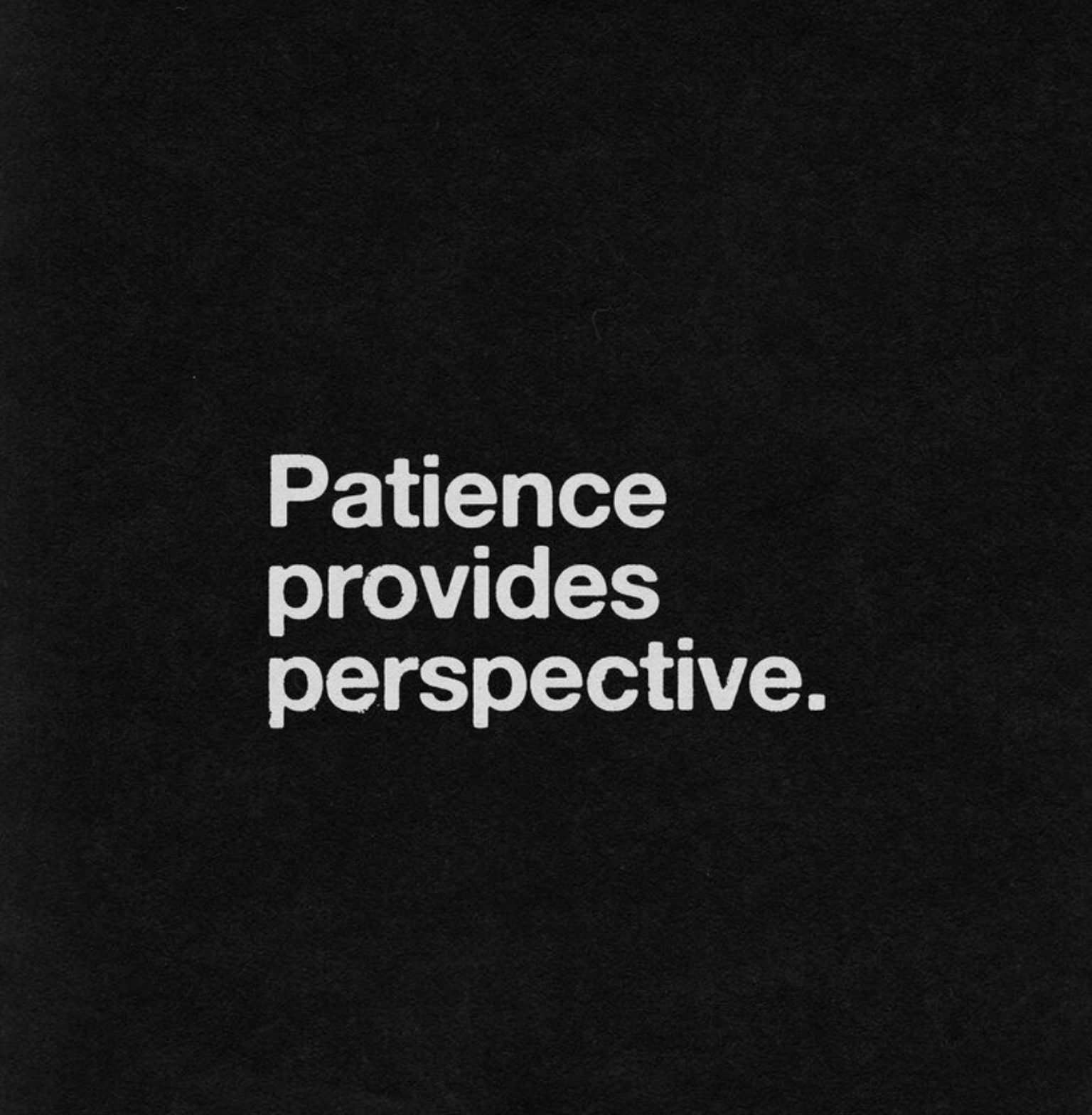
BELIEVE
Believe in them. Then tell them you believe in them. Be realistic.

In a fascinating episode of the podcast ‘a bit of optimism with Simon Sinek’, Deeyah Khan articulated the concept of ‘extreme listening’ in her research on why people joined the Jihad and other radical groups. The parallels between what they said, and what Rita Pierson spoke about in her TED talk, were clear-cut. If students are unmotivated or struggling then what will really make a difference in their life is who shows up for them during this period and the four aphorisms above will allow you to become that person. Above all, amid a global pandemic in which the whole world has suffered beyond what we could have imagined merely 12 months ago, let us all remember to be kinder to each other.
If anyone is interested in having a conversation on this topic (or anything at all), please do get in touch, because we are our best hope. Together, we can do anything.
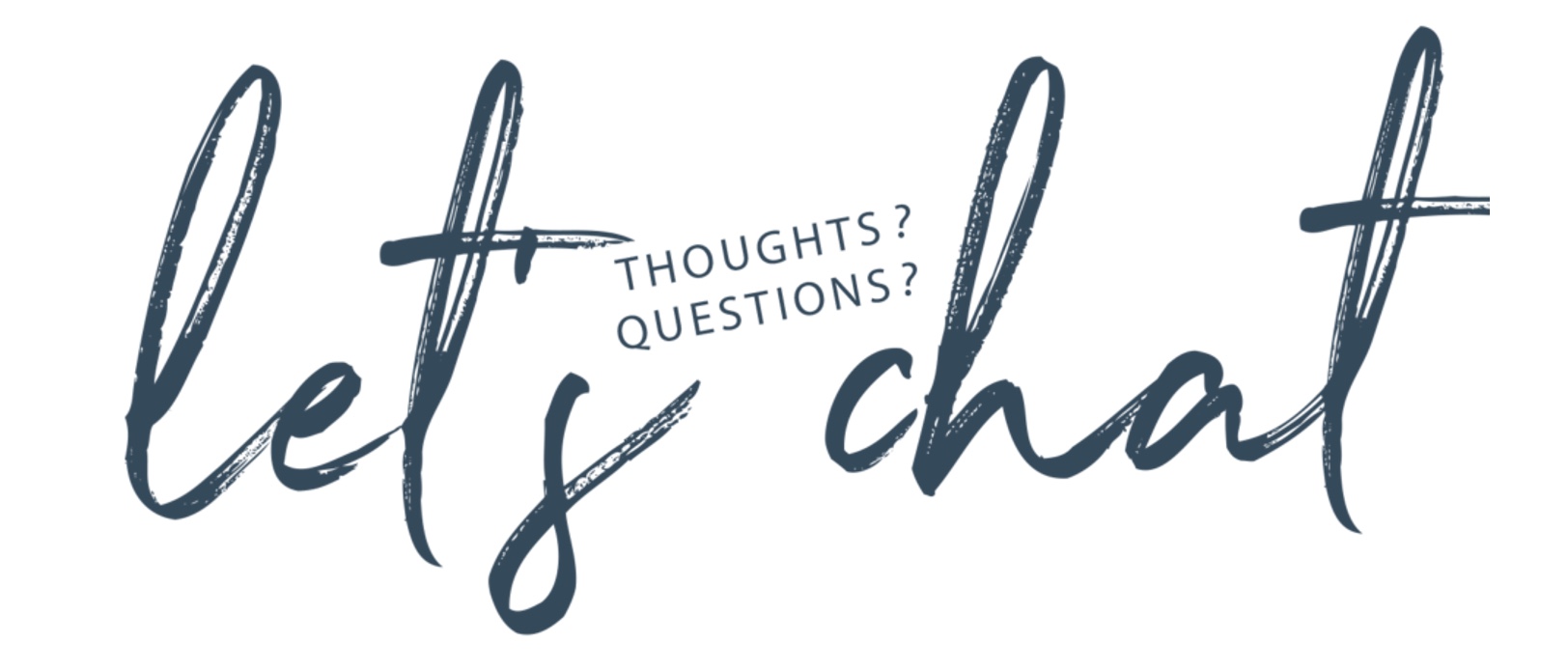

March 2021 Edition

By Ashley Milum
Share
Rosenshine in the morning!
What is it?
Well, something very simple really: Mr Rosenshine’s ‘Principles of instruction’ are 10 steps that formulate a linear pattern to produce learning – yes, as easy as that! Dylan Wiliam describes learning as ‘a change in Long Term memory’, which is exactly what Rosenshine intended for his Principles to achieve. By using his Principles, educators are able to formulate a process by which learners are able to build strong memory retention and retrieval.
Rosenshine has created an accessible format that packages ideas such as cognitive load, retrieval practice, deliberate practice, spacing and interleaving and more, into a format that busy educators like yourself can digest and apply.
Where did I see and hear about it?
Rosenshine’s Principles became an increasingly consistent thread on twitter that bound together many books written by leaders as well as articles of research and the brilliant work of EEF. Before long, the wonderful world of twitter was jam-packed with fellow educators and educationalists making reference to Rosenshine’s work.
How to use it?
Tom Sherrington (@teacherhead) has helpfully bundled the 10 principles into 4 strands that group together in pedagogical terms. Some will find this a helpful way of better utilising the Principles in the classroom as the four strands are to be utilised at different stages in the learning process.
Low-stakes quizzes can be used to recall previous knowledge, known as retrieval practice where spacing and interleaving can be used so that just as knowledge is about to be forgotten (law of diminishing returns), neuro-pathways (like roads that link memories) are then used again and strengthened (think of a stream carving it’s way into the ground) by the retrieval from Long-Term memory (LTM). Society refers to ‘muscle memory’, which nicely encapsulates when LTM is deeply embedded so that an automaticity allows the LTM to be accessed whilst the working memory is freed up to deal with whatever else the person must focus on.
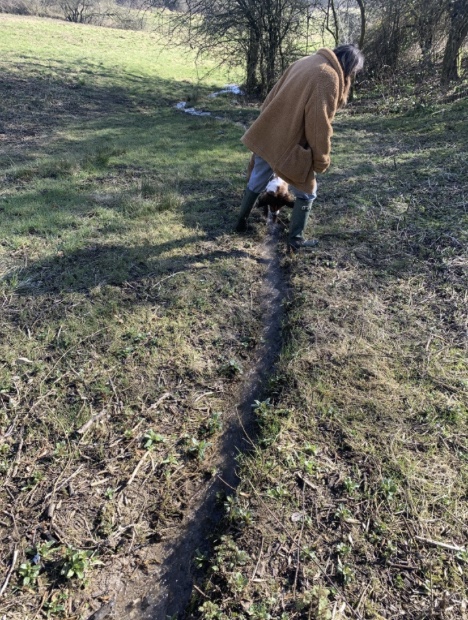
At Avanti Gardens School, we have further simplified the 10 principles before using Rosenshine’s model in it’s entirety. For now, we have 3 T&L priorities to ensure the fundamentals of good teaching and learning are present in every classroom, all of the time.
The three priorities are:
- Modelling;
- Scaffolding up;
- AfL.
At the start of each session, we have a ‘fast 5’ to recall prior knowledge to enhance memory of previous learning. We find it also helpful for children to make links in their learning, further strengthening their neurological pathways.
At AGS, we want to keep teachers focus on planning, teaching and feedback. I am clear that T&L is a simple process of understanding what pupils know and what they don’t – then we teach them what they need to know. Through our adapted implementation of Rosenshine’s Principles we have made sure the learning process is understood clearly.
How to connect with others to evaluate and share?
Use twitter and ‘We Are in Beta’ to learn and share your understanding and application of Rosenshine’s principles.

March 2021 Edition

Andrea Kahn
Share
Introducing: Andrea Kahn
When and why did you become a teacher?
I decided to become a teacher at the age of 11 after my first lesson in Religious Studies. My teachers motivated and inspired me with their extensive subject knowledge, engaging manner which in turn fostered in me a love for the subject and a desire to succeed. They prompted me to question, research and be a creative thinker and I knew straightaway that one day I wanted to impart this into others. The solid foundation I gained ensured that I fostered a lifelong passion for the subject. When I graduated at age 21 from the University of Manchester with a BA Hons in Comparative Religion I was at a cross roads, I did not feel ready to start teaching and felt that I needed to follow a different path first (I always had the goal to become a teacher at a later date). I pursued a successful career in marketing for around 13 years at both Agency and Client side.
One Monday evening I came across an advertisement in a local paper for a role at my secondary school (where the same teachers were still teaching). I immediately wrote a letter from the heart. The letter stated that I had always wanted to become an RS teacher and if in the future a suitable opportunity arose then to bear me in mind. The next morning I posted the letter, on the Wednesday morning I received a call to invite me for an interview and by that Friday lunchtime I had been offered the role. I could not believe it, I would start in a few months as an unqualified teacher and would then embark on the GTP. It was a whirlwind decision and at the time quite reckless as I was walking away from a good career and starting again from scratch. However, I knew that the time was right and I needed to follow my dream. It also showed me that things happen for a reason and to embrace new opportunities when they arise.
What advice would you give to your younger self at the start of your career?
The advice I would give my younger self is embrace everything as an opportunity and don’t be afraid to ask for help – that is a strength not a weakness. In addition, I would advise myself to volunteer to help in extra curricular activities e.g. helping at a school play, school trips etc as that is a good way you can get involved in school life and get to know colleagues and students in a different capacity from the classroom.
How do you manage your own workload and well-being?
I write lists, prioritise and then tick the tasks off when they are completed. I also use lots of post it notes in planning and prioritising. I have learnt that each day can be unpredictable and accept this rather than challenging it.
There are times when I can’t complete all my tasks and as a result, I will have to readjust accordingly. I also have high expectations so I do need to factor this into my workload to ensure that I spend the appropriate time on the right tasks.
I have found that talking to colleagues can be invaluable to wellbeing either for advice or just to have a catch up over a cup of tea. I also allow time at the end of the day to reflect on the events from the day and learn from them. I am fortunate enough to have an incredibly supportive husband, family (and friends) and by talking to them and spending time with them that is important for my wellbeing. Where possible I try to ensure weekend and holidays are family time and use this time wisely to relax and recharge my batteries.
During the last few months, I have started setting new tasks for myself each week e.g. making a new recipe, decorating. This new focus has been so beneficial to my wellbeing as it has provided me with time and space for myself (a luxury in a house with three children). In addition, I belong to a book group where I enjoy reading books from a range of genres as well discussing them with a people not in my social circle. We have just finished reading ‘Girl, Woman, Other’ by Bernardine Evaristo and our next book is ‘Hamnet’ by Maggie O’Farrell.
Is teaching and art or a craft?
This is a tricky question as in all honesty I feel that teaching is both an art and a craft. To love your subject, to be inspired to help others and enable students best life chances means you should have a talent (art) but for that talent to develop it can’t stagnate and must develop and enhance overtime (craft ) into new areas with support, training and practice. You do not become talented overnight it takes effort, vision, support and an inner desire to succeed.
One book that you would recommend anyone working in a school should read.
After attending a Pastoral Conference around two years ago, I was inspired by the keynote speaker Paul McGee the author of S.U.M.O (Shut Up and Move On). He was dynamic, down to earth as well as humorous. He recounted his life story and his tale demonstrated one of determination and resilience. He then wrote this book and the techniques he references can be used in a variety of different situations. In schools, we encounter many students each day, some of which have a variety of issues, which they hold onto and can provide a barrier to their learning. This book has enabled me to use a very simplistic but effective technique for the students to view within themselves how important (on a scale of 1-10) an issue actually is and therefore to put it into context. The techniques from this book can be used in a whole range of situations (not just for students). It facilitates coaching, self-reflection as well as strategies for support to be put into place (if required). I have never ever attended a conference and felt so inspired to buy a book immediately!
Avanti Schools Trust is pleased to extend an invitation to staff from other schools to join a ‘Wellbeing Webinar’ that will be facilitated by Emma Kell and Adrian Bethune the authors of a recently published guide book for staff working in school ‘Teacher Wellbeing & Self-Care.’ The webinar will focus on some tips and ideas that school staff might adapt in their daily lives to help promote their own wellbeing and explains how and why wellbeing is essential to effective teaching. Emma and Adrian will explain the thinking that underpins the guide book and take questions on all aspects of how best to ensure wellbeing and self-care.
If any of your staff might be interested in taking part in the webinar let us know at [email protected]




